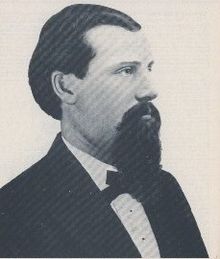
Virginia City is a town in and the county seat of Madison County, Montana, United States. In 1961 the town and the surrounding area were designated a National Historic Landmark District, the Virginia City Historic District. The population was 219 at the 2020 census.

Bannack is a ghost town in Beaverhead County, Montana, United States, located on Grasshopper Creek, approximately 11 miles (18 km) upstream from where Grasshopper Creek joins with the Beaverhead River south of Dillon. Founded in 1862, the town is a National Historic Landmark managed by the state of Montana as Bannack State Park.
Tom Bell was a western outlaw and physician known as the "Outlaw Doc". He was the first outlaw to organize a stagecoach robbery in the United States.

Henry Plummer (1832–1864) was a prospector, lawman, and outlaw in the American West in the 1850s and 1860s, who was known to have killed several men. He was elected sheriff of Bannack, Montana, in 1863 and served until 1864, during which period he was accused of being the leader of a "road agent" gang of outlaws known as the "Innocents," who preyed on shipments from Virginia City, Montana to other areas. In response some leaders in Virginia City formed the Vigilance Committee of Alder Gulch and began to take action against Plummer's gang, gaining confessions from a couple of men they arrested in early January 1864. On January 10, 1864, Plummer and two associates were arrested in Bannack by a company of the Vigilantes and summarily hanged. Plummer was given a posthumous trial in 1993 which led to a mistrial. The jury was split 6–6.

Thomas Edward Ketchum was an American cowboy who later became an outlaw. He was executed in 1901 for attempted train robbery. The execution by hanging was botched; he was decapitated because the executioner used a rope that was too long.

Harvey Alexander Logan, also known as Kid Curry, was an American outlaw and gunman who rode with Butch Cassidy and the Sundance Kid's infamous Wild Bunch gang during the late 19th and early 20th centuries. Despite being less well-known than his fellow gang members, he has since been referred to as "the wildest of the Wild Bunch", having reputedly killed at least nine law enforcement officers in five shootings and another two men in other instances. He was involved in numerous shootouts with police and civilians and participated in several bank and train robberies with various gangs during his outlaw days.
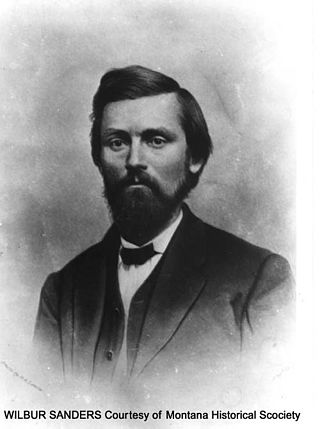
Wilbur Fisk Sanders was a United States senator from Montana. A leading pioneer and a skilled lawyer, Sanders played a prominent role in the development of Montana Territory and the state's early political history.

The Banditti of the Prairie, also known as The Banditti, Prairie Pirates, Prairie Bandits, and Pirates of the Prairie, in the U.S. states of Illinois, Indiana, and Ohio, and the Territory of Iowa, were a group of loose-knit outlaw gangs, during the early to mid-19th century. Though bands of roving criminals were common in many parts of Illinois, the counties of Lee, DeKalb, Ogle, and Winnebago were especially plagued by them. The new crime wave in the region of the frontier Midwest may have occurred following the crackdown on Southern outlaws by the rising vigilante-regulator movement and the breakup of the criminal syndicate of John A. Murrell and his gang, the "Mystic Clan" in the Southern United States. In 1841, the escalating pattern of house burglary, horse and cattle theft, stagecoach and highway robbery, counterfeiting, and murder associated with the Banditti had come to a head in Ogle County. As the crimes continued, local citizens formed bands of vigilantes known as Regulators. A clash between the Banditti and the Regulators in Ogle County near Oregon, Illinois, resulted in the outlaws' demise and decreased Banditti activity and violent crime within the county.
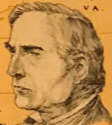
Samuel Ross Mason, also spelled Meason, was a Virginia militia captain, on the American western frontier, during the American Revolutionary War. After the war, he became the leader of the Mason Gang, a criminal gang of river pirates and highwaymen on the lower Ohio River and the Mississippi River in the late 18th and early 19th centuries. He was associated with outlaws around Red Banks, Cave-in-Rock, Stack Island, and the Natchez Trace.
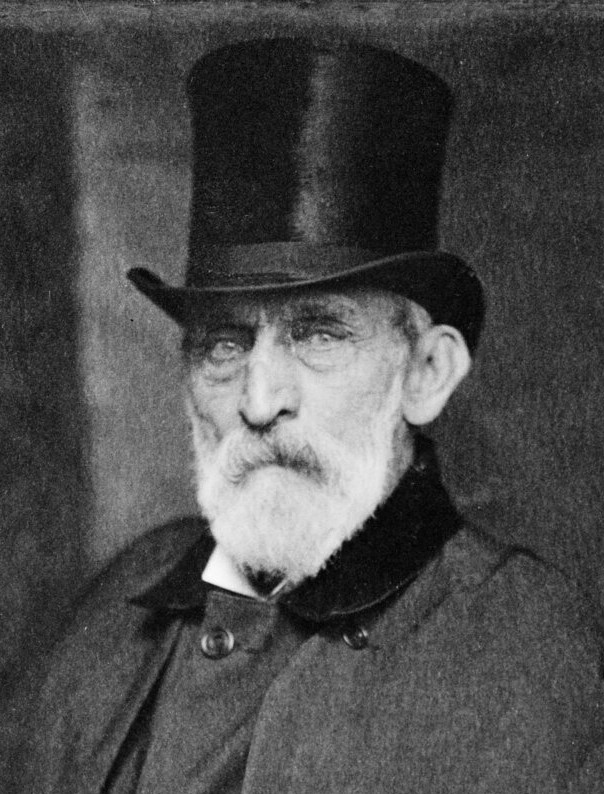
Sidney Edgerton was an American politician, lawyer, judge and teacher from Ohio. He served during the American Civil War, as a Squirrel Hunter. During this time, Edgerton served as a U.S. Congressman. In 1863, Abraham Lincoln appointed him the first Chief justice of the Idaho Territorial Court. Edgerton lobbied for the creation of separate territories, out of the Idaho Territory, and in 1864, Abraham Lincoln appointed Edgerton as the first Territorial Governor of Montana. During his term as Territorial Governor, he was an alleged member of the infamous Montana Vigilantes, and was reputedly among its founders.
The Reno Gang, also known as the Reno Brothers Gang and The Jackson Thieves, were a group of criminals that operated in the Midwestern United States during and just after the American Civil War. Though short-lived, the gang carried out the first three peacetime train robberies in U.S. history. Most of the stolen money was never recovered.
Felipe Nerio Espinosa was a notorious Mexican-American murderer who killed an estimated thirty-two people in the Colorado Territory throughout the spring and fall of 1863.
Hell Gate is a ghost town at the western end of the Missoula Valley in Missoula County, Montana, United States. The town was located on the banks of the Clark Fork River roughly five miles downstream from present-day Missoula near what is now Frenchtown.
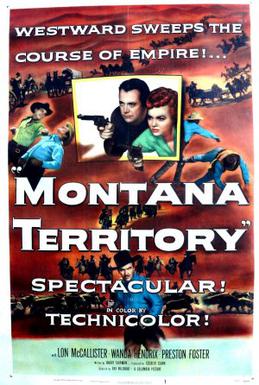
Montana Territory is a 1952 American Western film directed by Ray Nazarro and starring Lon McCallister, Wanda Hendrix, Preston Foster. It is a classic western movie, with bandits, a corrupt sheriff, and a hero who falls for a beautiful woman.

Levi Boone Helm was an American mountain man, Old West gunfighter and serial killer known as the Kentucky Cannibal. Helm gained his nickname for his opportunistic and unrepentant proclivity for consuming human flesh, usually in survival situations, though instances of killing people for their meat unprovoked were also documented.
George Lane, better known as Clubfoot George, was an alleged outlaw who was hanged on January 14, 1864 in Nevada City, Montana. Lane was later alleged to have been a member of a criminal gang known as the Gang of Innocents and sentenced to death. The execution was carried out by the Montana Vigilantes, a committee which functioned during Montana's gold rush in 1863 and 1864.
The history of vigilante justice and the Montana Vigilantes began in 1863 in what was at the time a remote part of eastern Idaho Territory. Vigilante activities continued, although somewhat sporadically, through the Montana Territorial period until the territory became the state of Montana on November 8, 1889. Vigilantism arose because territorial law enforcement and the courts had very little power in the remote mining camps during the territorial period.
This is a Timeline of pre-statehood Montana history comprising substantial events in the history of the area that would become the State of Montana prior to November 8, 1889. This area existed as Montana Territory from May 28, 1864, until November 8, 1889, when it was admitted to the Union as the State of Montana.
The Daly Gang was a notorious, though now obscure, 19th-century bandit gang that operated in Aurora, Nevada, and its neighboring parts. It was named after its leader, John Daly, but was masterminded by a boss known only as “Three-Fingered” Jack McDowell. Until it was put down and its leaders executed at the behest of a vigilante band in 1864, the gang freely terrorized Aurora for a quarter-century's time and was infamous for its armed robberies and shootouts and violent treatment of its victims and anyone who resisted its robbery. It is now considered by historians as one of the most underrated, violent gangs in the Old West.
Joaquin Valenzuela was a Sonoran fortyniner who came to California in 1849, during the California Gold Rush, with a small band of people from the vicinity of their hometown with Joaquin Murrieta. He subsequently became one of the leaders of the Five Joaquins Gang. Descendants of his family and those of former gang members said he died in 1853, at the hands of the California Rangers on Cantua Creek. The San Luis Obispo Vigilantes claim he was still alive when they took him to be hanged for his crimes with the Five Joaquins Gang in San Luis Obispo in 1858.
